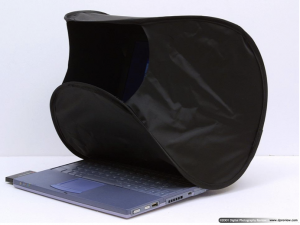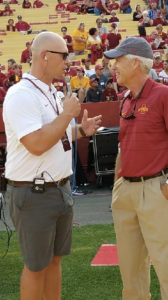Want to book an appointment with Dr. Buck? Call 515-239-3410 today or click on the banner ad below to visit the McFarland Clinic’s brand new sports medicine website.
You may have to look closely, but there’s a new replay computer on the sidelines for ISU football and it’s not for the officials. Instead, the replay monitor is specifically for the team doctors and athletic trainers. 
DVSport has partnered with major conference college football to provide HD quality replays to assess injuries. The major reason for the new technology is to evaluate potential instances that create head injuries, particularly concussions. The second reason is to get a detailed analysis of musculoskeletal injuries, looking for mechanisms of injury and likely severity. This will assist us in the treatment and rehabilitation of injuries.
There is still so much to be learned about concussions.
Did the head injury occur from a direct blow? Was it a deceleration injury? Did the athlete appeared dazed and confused after the play? Was there associated neck related trauma? Did the helmet stay well positioned on the head? Was it a low speed/energy trauma or was the injury from high energy hit?
Once these assessments are made, the athlete is evaluated on the sideline and neurologic testing is performed. How did the athlete perform on these tests? Was there a correlation of the severity of the injury seen on the DVSport system and the cognitive deficits on the sideline? Is there a correlation with the type of injury and the ultimate recovery period for the athlete’s concussion?
It is surprising how little we really know about head injuries. The DVSport video system will be a very useful tool to more accurately diagnose and treat concussions. It may provide a more objective tool to pull athletes from competition if the occasion is ever appropriate.
With other orthopedic injuries the mechanism of injury can be well determined. The software gives us four video angles to review and the ability to review slow motion and stop action. If we can determine that an ankle injury occurred from a planted, externally rotated foot, a high ankle sprain can be suspected.
If a non-contact injury occurs with the knee joint hyperextended or subluxed, an ACL injury may be top on the list of possible injured structures.
From an orthopedic surgeon standpoint, it will be fascinating to see the moment of injury and then correlate with the physical exam, xrays and MRI scan. Or in bad situations, what the joint looks like at surgery. DVSport will be a valuable teaching tool. Information can be shared between schools and everyone will benefit. (Though not during the season for obvious reasons!)
Another detail about the DVSport video system: One might think that we health care providers might be asked to make a comment about a controversial referee call. That won’t happen as there is a time delay for the healthcare computer feed. So our reviews won’t be timely enough to do that type of assessment. Thank goodness.
This technology is in its infancy and we are just beginning to learn how to best use it. Stay tuned for future blogs that shed more light on this system.







